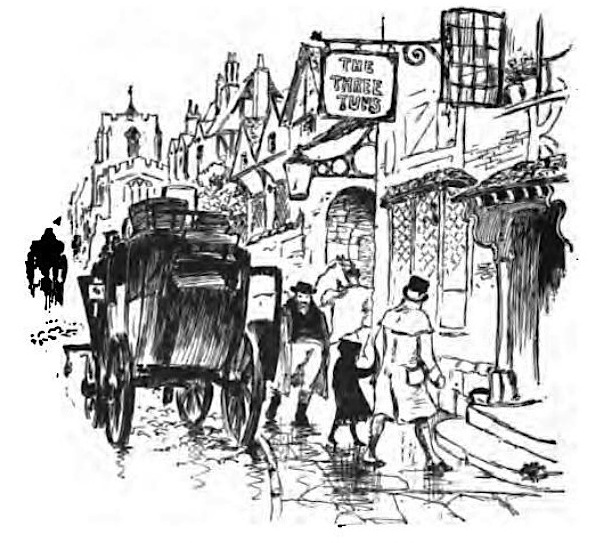
"I was carried into an inn." Illustrator: Edmund Henry Garrett (1853-1929), an American artist and illustrator. Source: Jane Eyre I, facing p. 55. Jane is on the way to Lowood School. Here, Jane says,
the guard wanted me to have some dinner; but, as I had no appetite, he left me in an immense room with a fireplace at each end, a chandelier pendent from the ceiling, and a little red gallery high up against the wall filled with musical instruments. Here I walked about for a long time, feeling very strange, and mortally apprehensive of some one coming in and kidnapping me.... At last the guard returned; once more I was stowed away in the coach, my protector mounted his own seat, sounded his hollow horn, and away we rattled....
A similar stop-over would occur in David Copperfield, written about two years later, in which David is taken into an inn on his way to school at Salem House. He too is vulnerable. He has not lost his appetite, but the waiter takes advantage of his youth and inexperience: he is tricked out of his meal and still finds himself tipping the waiter. Thus the situation gets a comic twist but our sympathy for the child is, if anything, increased. There can be little doubt that Dickens had read the earlier novel, although he claimed not to have done. As Robert Newsom says, both David Copperfield and Bleak House "are full of its traces" (99).
Image scan and text by Jacqueline Banerjee. You may use this image without prior permission for any scholarly or educational purpose as long as you (1) credit the source, and (2) link your document to this URL in a web document or cite it in a print one. Click on the image, or on the link below, for the article in which this image appears.
Related Material
- "Specific dates: the link between Jane Eyre, the Book of Common Prayer, and the Bible"
- Jane Eyre, Chapter V
- "The Friendly Waiter and I"
Bibliography
"Edmund Garrett's illustrations to Jane Eyre." British Library. Web. 5 December 2017.
Jane Eyre. Vol. I. 2 vols. New York: Thomas Y. Crowell, 1890. Internet Archive. Contributed by the University of Michigan. Web. 5 December 2017.
Newsom, Robert. "Fictions of Childhood." The Cambridge Companion to Charles Dickens. Ed. John O. Jordan. Cambridge: Cambridge University Press, 2001. 92-105.
Created 5 December 2017